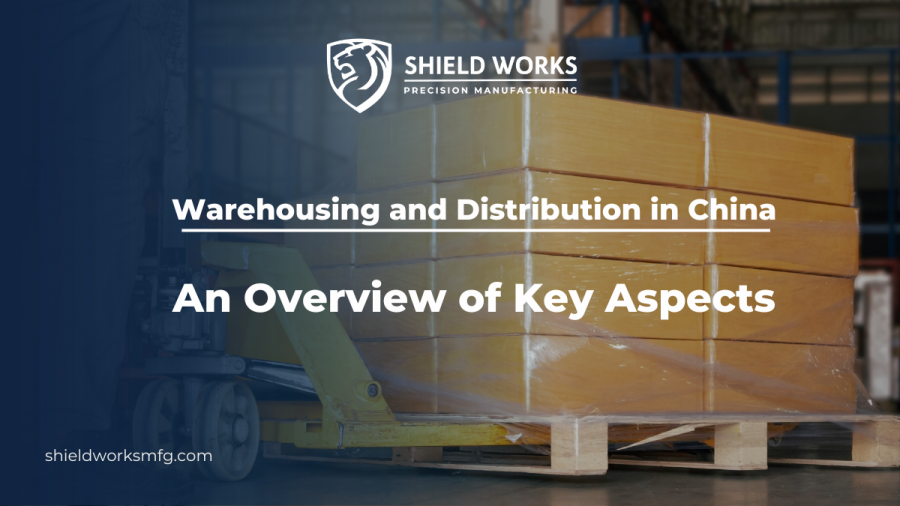Warehousing and Distribution in China: An Overview of Key Aspects

As a global economic powerhouse and manufacturing hub, China’s logistics sector plays a pivotal role in facilitating international trade and supply chain operations. China’s logistics sector is marked by a unique blend of tradition and innovation, where centuries-old trade routes intersect with state-of-the-art technologies, making it a fascinating subject of study for both scholars and business practitioners alike.
Whether you’re a business owner looking to expand your operations to China, a logistics enthusiast curious about the intricacies of the Chinese supply chain, or an industry professional seeking insights, we have you covered in this comprehensive guide. So, let’s embark on this informative journey together and gain valuable insights into the mechanisms that keep the wheels of global commerce turning within this dynamic nation.
The Importance of Warehousing and Distribution in China
With a rapidly expanding manufacturing sector, it’s crucial for businesses to have access to efficient and effective warehousing and distribution networks in order to keep up with demand. This is particularly true for businesses engaged in international trade, where timely and cost-effective transport of goods is essential.
Effective warehousing and distribution are also essential for optimizing inventory management and minimizing costs associated with excess inventory. It can also help reduce lead times, which is particularly important in fast-moving industries such as e-commerce and consumer goods.
Types of Warehouses in China and Their Functions
China has a diverse range of warehouse types catering to different industries and products. Understanding the different types of warehouses is important to effectively manage logistics operations in China.
Distribution Centers
These are the most common type of warehouses in China and are used to store and distribute goods for delivery to customers. Distribution centers are often located in strategic locations to facilitate easy and quick transportation of goods.
Bonded Warehouse
Bonded warehouses are designed for the storage and management of imported and exported goods. They provide a secure and controlled environment for goods that have not yet been cleared by customs. These warehouses are often located in free trade zones.
Cold Storage Warehouses
As a major agricultural producer, China has a large network of cold storage warehouses used to store perishable goods such as fruits, vegetables, meat, and seafood. These warehouses are equipped with temperature-controlled facilities to maintain the freshness and quality of the goods.
E-commerce Warehouses
With the growth of online shopping, e-commerce warehouses have become an important part of the supply chain. These warehouses are designed for the storage and fulfillment of online orders.
Logistics Infrastructure in China
China’s logistics infrastructure is an integral component of its warehousing and distribution industry. The country has made significant investments in developing a robust transportation network, including highways, railways, airports, and seaports, to facilitate the efficient movement of goods within and outside the country.
China’s highway system is extensive and well-developed, with a vast network of national and provincial highways connecting major cities and industrial centers. This allows for the smooth transportation of goods from manufacturing facilities to warehouses and distribution centers.
The country’s railway network is also highly advanced, with a comprehensive system that covers both passenger and freight transport. China’s high-speed rail network is the largest in the world and plays a crucial role in transporting goods quickly and efficiently across the country.
In terms of air transportation, China has a number of major international airports that serve as important hubs for both domestic and international cargo. These airports are equipped with modern facilities and efficient logistics services to handle the growing demand for air freight.
Furthermore, China’s seaports are among the busiest in the world, facilitating the import and export of goods on a massive scale. Major ports such as Shanghai, Shenzhen, and Ningbo-Zhoushan handle a significant portion of China’s trade and are equipped with state-of-the-art infrastructure to accommodate large container vessels.
In addition to transportation infrastructure, China has also invested in the development of logistics parks and free trade zones, which provide integrated services such as warehousing, customs clearance, and value-added logistics. These logistics hubs offer streamlined operations and attractive incentives for businesses looking to establish a presence in China.
Opportunities For Growth in China’s Warehousing and Distribution Industry
China’s warehousing and distribution industry is constantly growing, there are significant opportunities in this sector. One major opportunity is the increasing demand for e-commerce fulfillment and delivery services, as online shopping continues to grow in popularity in China. This has led to the development of new distribution models, such as the use of automated warehouses and the integration of online platforms with physical distribution networks.
Another opportunity lies in the increasing demand for cold chain logistics, as China’s middle class continues to grow and demand higher quality food products. This has led to the development of specialized cold chain logistics providers and the upgrading of existing cold storage facilities.
Finally, the Chinese government’s Belt and Road Initiative, which aims to enhance connectivity and cooperation between China and other countries in Eurasia and Africa, has also created opportunities for growth in China’s warehousing and distribution industry. As more trade and investment flows between China and these regions, the demand for efficient logistics and distribution services is expected to increase.
Benefit From Warehousing and Distribution in China
The more you learn about warehousing and distribution in China, the better you can assess whether they might be the right business solution for your needs. There are numerous benefits to utilizing overseas warehousing and distribution services that you cannot obtain through any other means. If you have never used these services before, you might want to consider trying them out to witness firsthand what they can do for your business.
To gain a deeper understanding of how you can find the best warehousing and distribution company to cater to your specific requirements, don’t hesitate to reach out to our expert today for more information.
